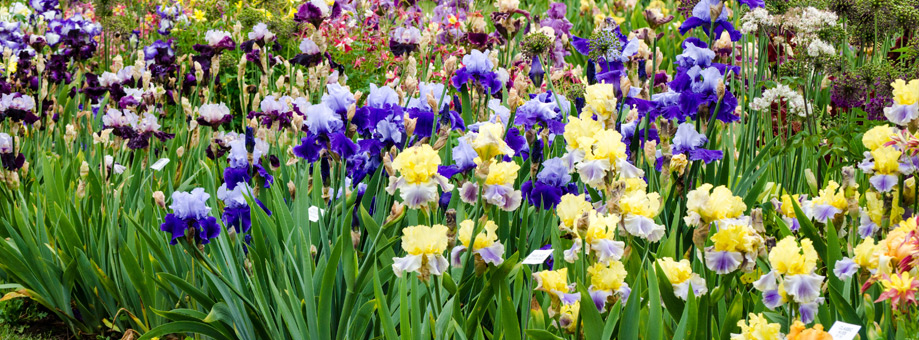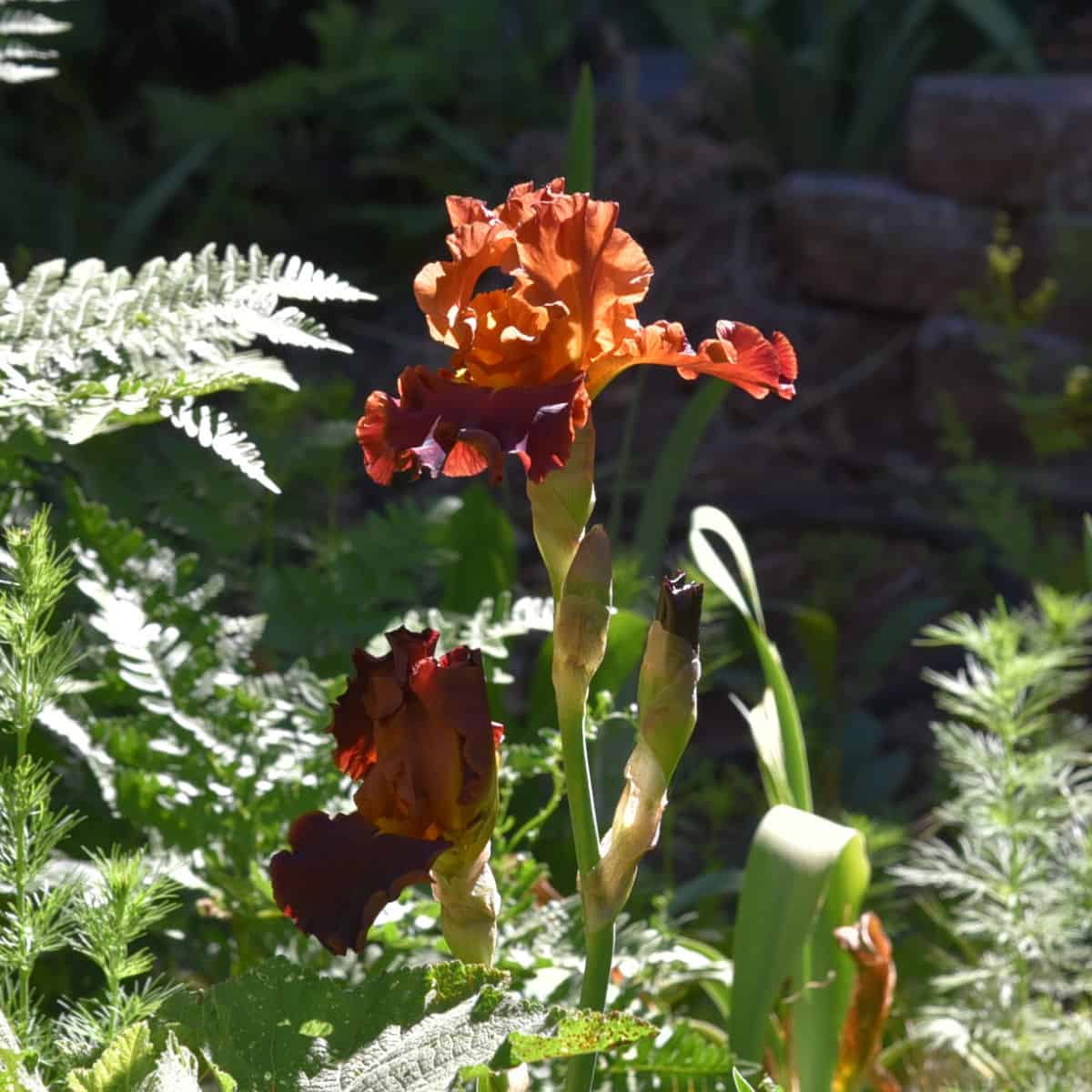Understanding the Sunlight Needs of Iris Plants
Iris plants are known for their stunning flowers and elegant foliage, but to thrive, they require a specific amount of sunlight. While they can tolerate some shade, iris plants generally need a significant amount of sunlight to produce healthy growth, vibrant colors, and abundant blooms. In fact, most iris varieties require at least six hours of direct sunlight per day to reach their full potential. But do iris need full sun to thrive? The answer lies in understanding the unique sunlight requirements of these beautiful plants.
When it comes to sunlight, iris plants have different needs depending on the variety. Some iris plants, such as the Japanese iris, can tolerate partial shade and still produce beautiful flowers. However, other varieties, like the bearded iris, require full sun to produce the best blooms. It’s essential to research the specific sunlight requirements of your iris variety to ensure you provide the best conditions for growth and flowering.
In addition to the type of iris, the climate and soil type also play a crucial role in determining the sunlight needs of iris plants. In warmer climates, iris plants may require some shade to prevent scorching, while in cooler climates, they may require more sunlight to promote healthy growth. Similarly, iris plants growing in well-draining soil may require more sunlight than those growing in heavy clay soil.
By understanding the unique sunlight requirements of iris plants, you can provide the best conditions for growth, flowering, and overall health. Whether you’re growing iris plants in full sun or partial shade, the key is to find the right balance of sunlight to meet their needs. With the right amount of sunlight, iris plants will reward you with stunning blooms and elegant foliage that will add beauty and elegance to any garden.
How to Provide the Right Amount of Sunlight for Your Iris Plants
Providing the right amount of sunlight for iris plants is crucial for their growth, flowering, and overall health. While iris plants can tolerate some shade, they generally require a significant amount of sunlight to thrive. But how do you determine the right amount of sunlight for your iris plants? The answer lies in considering several factors, including climate, soil type, and surrounding vegetation.
Climate plays a significant role in determining the sunlight needs of iris plants. In warmer climates, iris plants may require some shade to prevent scorching, while in cooler climates, they may require more sunlight to promote healthy growth. For example, in regions with intense sunlight, such as the southern United States, iris plants may benefit from partial shade, especially during the hottest part of the day. In contrast, in regions with mild winters and cool summers, such as the Pacific Northwest, iris plants may require full sun to thrive.
Soil type is another important factor to consider when determining the sunlight needs of iris plants. Iris plants growing in well-draining soil may require more sunlight than those growing in heavy clay soil. This is because well-draining soil allows for better air circulation and water penetration, which can help to prevent root rot and other problems associated with excessive moisture.
Surrounding vegetation is also an important consideration when determining the sunlight needs of iris plants. If you’re growing iris plants in a garden with other plants, you’ll need to consider the amount of shade provided by those plants. For example, if you’re growing iris plants near a large tree or shrub, you may need to provide supplemental lighting to ensure they receive enough sunlight.
So, how do you choose the best location for your iris plants in the garden? The key is to observe the amount of direct sunlight your garden receives throughout the day. If you’re unsure, you can use a sunlight meter or simply observe the shadows cast by surrounding objects. By choosing a location that receives the right amount of sunlight, you can help to ensure your iris plants thrive.
The Benefits of Full Sun for Iris Plants
While iris plants can tolerate some shade, they generally require a significant amount of sunlight to thrive. In fact, full sun is often the key to unlocking the full potential of iris plants. But what exactly are the benefits of full sun for iris plants? And which varieties are particularly suited to full sun conditions?
One of the main benefits of full sun for iris plants is increased flowering. Iris plants that receive full sun tend to produce more blooms, and those blooms tend to be larger and more vibrant. This is because sunlight triggers the production of chlorophyll, which is essential for photosynthesis and flower production. Additionally, full sun helps to promote healthy growth and development in iris plants, leading to stronger, more robust plants that are better equipped to withstand disease and pests.
Another benefit of full sun for iris plants is enhanced color vibrancy. Iris plants that receive full sun tend to have more intense, vibrant colors, which can add a pop of color to any garden or landscape. This is because sunlight helps to bring out the natural pigments in the flowers, resulting in a more dramatic display of color.
So, which iris varieties are particularly suited to full sun conditions? Some popular varieties include the bearded iris, the Japanese iris, and the Louisiana iris. These varieties tend to thrive in full sun and can tolerate high temperatures and dry soil. However, it’s worth noting that even these varieties may require some shade in extreme climates or during periods of intense heat.
Other benefits of full sun for iris plants include improved air circulation, which can help to prevent disease, and increased soil temperature, which can help to promote healthy root growth. Additionally, full sun can help to reduce the risk of fungal diseases, which can be a major problem for iris plants in shady conditions.
Overall, full sun is an essential component of iris care, and can help to unlock the full potential of these beautiful plants. By providing your iris plants with the right amount of sunlight, you can help to promote healthy growth, increase flowering, and enhance color vibrancy.
Can Iris Plants Tolerate Partial Shade?
While iris plants generally require a significant amount of sunlight to thrive, some varieties can tolerate partial shade. But what exactly does partial shade mean, and how can you determine whether an iris plant can tolerate it?
Partial shade refers to a location that receives direct sunlight for only part of the day, typically 4-6 hours. This can be due to the presence of trees, buildings, or other obstructions that block direct sunlight. Iris plants that can tolerate partial shade are often those that are native to woodland or forest environments, where the canopy provides dappled shade.
Some examples of iris varieties that can tolerate partial shade include the Japanese iris and the Siberian iris. These varieties tend to have more delicate flowers and foliage, and can thrive in conditions with less direct sunlight. However, it’s worth noting that even these varieties will still require some direct sunlight to produce flowers and maintain healthy growth.
So, how can you determine whether an iris plant can tolerate partial shade? One way is to observe the plant’s response to shade. If the plant is already growing in a shaded location, you can observe its growth and flowering patterns to see if it is thriving. If the plant is not producing flowers or is growing slowly, it may be a sign that it needs more sunlight.
Another way to determine whether an iris plant can tolerate partial shade is to consider the specific growing conditions of the plant. If the plant is growing in a location with rich soil and adequate moisture, it may be more tolerant of shade than a plant growing in poor soil with limited water.
If you do need to provide supplemental lighting for your iris plants, there are several options available. One option is to use grow lights, which can provide the necessary spectrum and intensity of light for plant growth. Another option is to use reflective surfaces, such as mirrors or aluminum foil, to amplify natural light and direct it towards the plants.
Overall, while iris plants can tolerate some shade, they generally require a significant amount of sunlight to thrive. By understanding the specific needs of your iris plants and providing the right amount of sunlight, you can help to promote healthy growth and flowering.
How to Create a Sunny Spot for Your Iris Plants
Creating a sunny spot for your iris plants is crucial for their growth and flowering. While iris plants can tolerate some shade, they generally require a significant amount of sunlight to thrive. But how can you create a sunny spot for your iris plants, especially if your garden is partially shaded?
One way to create a sunny spot for your iris plants is to prune surrounding vegetation. If you have trees or shrubs that are blocking direct sunlight, consider pruning them back to allow more sunlight to reach your iris plants. This will not only provide more sunlight but also improve air circulation, which can help to prevent disease.
Another way to create a sunny spot for your iris plants is to remove obstructions. If you have garden ornaments, furniture, or other objects that are blocking direct sunlight, consider moving them to a different location. This will allow more sunlight to reach your iris plants and create a more favorable growing environment.
Using reflective surfaces is another way to create a sunny spot for your iris plants. You can use mirrors, aluminum foil, or other reflective materials to amplify natural light and direct it towards your iris plants. This can be especially useful if you have a partially shaded garden and want to provide more sunlight for your iris plants.
Finally, consider using grow lights to supplement natural light. If you have a garden that is heavily shaded, grow lights can provide the necessary spectrum and intensity of light for plant growth. Just be sure to choose grow lights that are specifically designed for flowering plants like iris, and follow the manufacturer’s instructions for use.
By creating a sunny spot for your iris plants, you can help to promote healthy growth and flowering. Remember to monitor your plants’ responses to sunlight and adjust their location as needed. With a little creativity and planning, you can create a sunny spot that will help your iris plants thrive.
Common Mistakes to Avoid When Providing Sunlight for Iris Plants
While providing sunlight for iris plants is essential for their growth and flowering, there are some common mistakes to avoid. By being aware of these mistakes, you can ensure that your iris plants receive the right amount of sunlight and thrive.
One common mistake to avoid is exposing iris plants to extreme temperatures. While iris plants can tolerate some heat, extreme temperatures can cause damage to the leaves and flowers. Make sure to provide some shade for your iris plants during the hottest part of the day, especially in warmer climates.
Another mistake to avoid is failing to provide sufficient water for your iris plants. While iris plants can tolerate some drought, consistent moisture is essential for healthy growth and flowering. Make sure to water your iris plants regularly, but avoid overwatering, which can lead to root rot and other problems.
Neglecting to fertilize regularly is another common mistake to avoid. Iris plants require regular fertilization to promote healthy growth and flowering. Use a balanced fertilizer that is specifically designed for flowering plants, and follow the manufacturer’s instructions for application.
Finally, avoid overcrowding your iris plants. While it can be tempting to plant multiple iris plants close together, this can lead to reduced air circulation and increased risk of disease. Make sure to plant your iris plants at least 12-18 inches apart to allow for good air circulation and healthy growth.
By avoiding these common mistakes, you can ensure that your iris plants receive the right amount of sunlight and thrive. Remember to monitor your plants’ responses to sunlight and adjust their location as needed. With proper care and attention, your iris plants will reward you with beautiful flowers and lush foliage.
Monitoring and Adjusting Sunlight Levels for Optimal Iris Care
Monitoring and adjusting sunlight levels is crucial for optimal iris care. By observing your iris plants’ responses to sunlight, you can determine whether they are receiving too much or too little sunlight and make adjustments as needed.
One way to monitor sunlight levels is to observe the color and texture of the leaves. If the leaves are becoming scorched or discolored, it may be a sign that the plant is receiving too much sunlight. On the other hand, if the leaves are becoming pale or weak, it may be a sign that the plant is not receiving enough sunlight.
Another way to monitor sunlight levels is to observe the flowering patterns of your iris plants. If the plants are not producing flowers, it may be a sign that they are not receiving enough sunlight. Conversely, if the plants are producing too many flowers, it may be a sign that they are receiving too much sunlight.
Adjusting sunlight levels can be done in a variety of ways. If your iris plants are receiving too much sunlight, you can provide some shade using a sheer curtain or a shade cloth. If your iris plants are not receiving enough sunlight, you can move them to a sunnier location or use grow lights to supplement natural light.
It’s also important to note that sunlight levels can vary depending on the time of day and the season. For example, during the summer months, the sun is higher in the sky and provides more intense sunlight. During the winter months, the sun is lower in the sky and provides less intense sunlight.
By monitoring and adjusting sunlight levels, you can ensure that your iris plants are receiving the right amount of sunlight for optimal growth and flowering. Remember to observe your plants’ responses to sunlight and make adjustments as needed to ensure the best possible results.
Conclusion: Finding the Perfect Balance of Sunlight for Your Iris Plants
In conclusion, finding the perfect balance of sunlight for your iris plants is crucial for their growth, flowering, and overall health. While iris plants can tolerate some shade, they generally require a significant amount of sunlight to thrive. By understanding the importance of sunlight for iris plants and following the tips outlined in this article, you can create a sunny spot that will help your iris plants flourish.
Remember to monitor your plants’ responses to sunlight and make adjustments as needed. Experiment with different sunlight levels and observe how your plants respond. With a little patience and practice, you can find the perfect balance of sunlight for your iris plants and enjoy their beautiful flowers and lush foliage.
So, do iris need full sun? The answer is yes, but with some caveats. While iris plants can tolerate some shade, they generally require a significant amount of sunlight to thrive. By providing the right amount of sunlight, you can help your iris plants grow and flower to their full potential.
By following the tips and guidelines outlined in this article, you can create a sunny spot that will help your iris plants thrive. Happy gardening!








